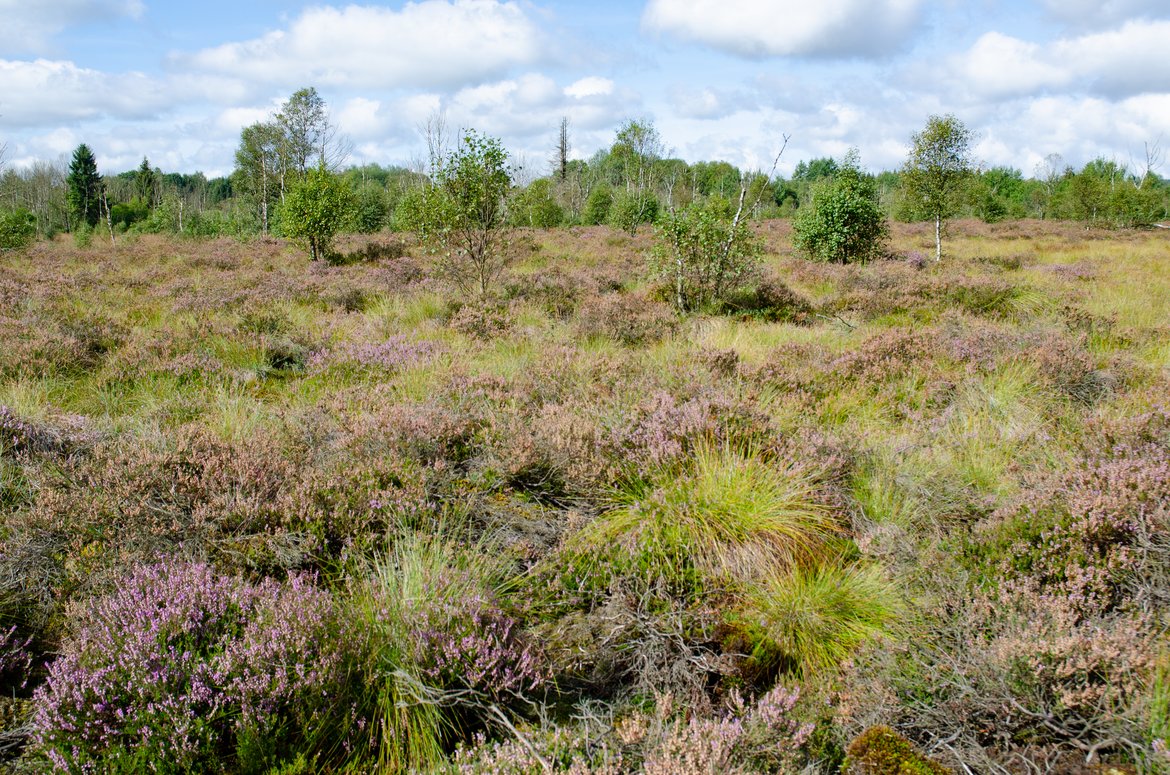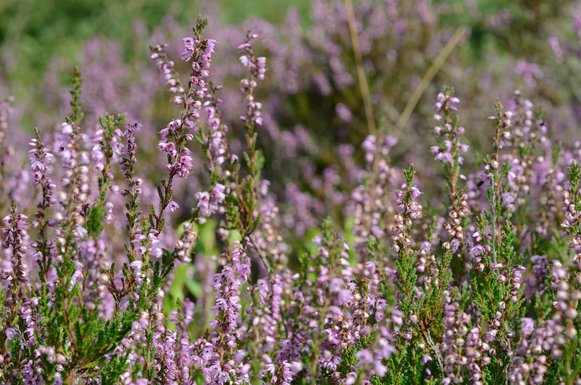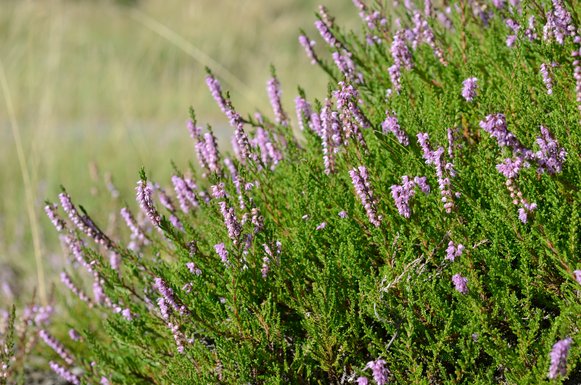Dry moorlands (Natura 2000 code - 4030)
Description
Dry moorlands occur on dry to moderately wet, poor to moderately poor in nutrients (oligo- to mesotrophic), and acidic soils. These plant formations can be found on plateaux or slopes. They are dominated by small shrubs such as false heather (also known as callune) and various brooms. Their presence is often linked to ancestral agro-pastoral practices. Most of the heathlands of yesteryear have disappeared, replaced by spruce plantations. Those that remain are often characterised by natural ageing, with the callune gradually degenerating due to excessive litter. Practices that encourage regeneration include light grazing, burning, temporary abandonment and, under certain conditions, mowing or mulching. Without maintenance, dry moorland tends to close in, giving way to woodland formations (birch, willow, rowan, etc.) or invaded by certain species such as flexuous cane, mullein or eagle fern.
As part of the project
The aim of the LIFE ArdennEislek project is to restore 32 hectares of dry moorland: 25 hectares in the Walloon Region and 7 hectares in the Grand Duchy of Luxembourg.
Some characteristic species
Dry moorlands are mainly composed of plants from the Ericaceae family: heather (Calluna vulgaris), bilberry (Vaccinium myrtillus), lingonberry (Vaccinium vitis-idaea), and various Fabaceae species such as: hairy broom (Genista pilosa) and petty whin (Genista anglica).
In terms of fauna, these habitats may be home to reptile species such as the viviparous lizard (Zootoca vivipara), and several birds of Community interest, such as the European nightjar (Caprimulgus europaeus) and the woodlark (Lullula arborea). There are also three species of protected ladybirds that are dependent on heather: the heather ladybird (Chilocorus bipustulatus), the hieroglyphic ladybird (Coccinella hieroglyphica), and a black ladybird species (Parexochomus nigromacula).

© Xavier Janssens





